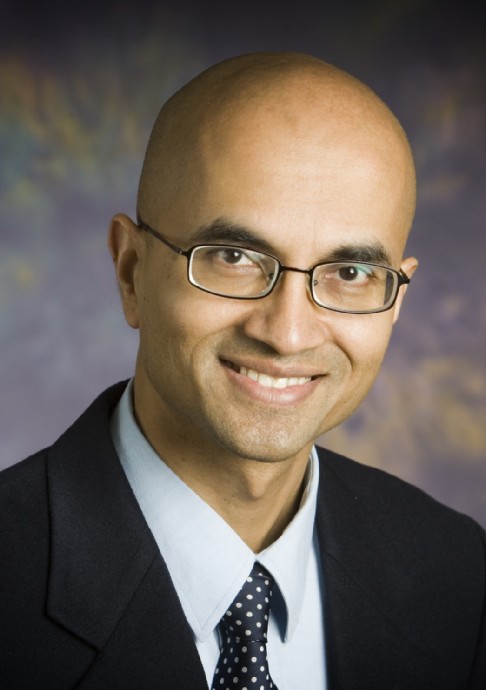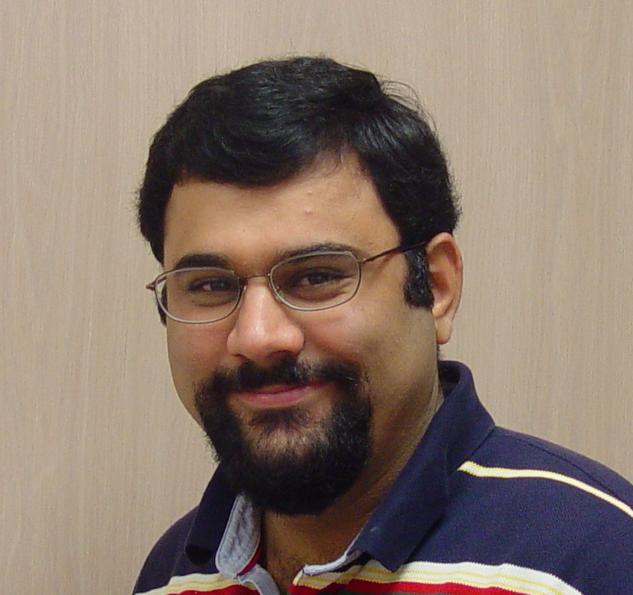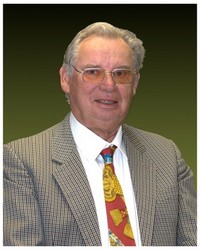Dr. Carlos Galup Montoro
Professor
Federal University of Santa Catarina
Date: December 11th, 2:00pm,
414 CESPR/Schapiro
Topic: CMOS
analog design
using all-region MOSFET modeling
Abstract
This seminar on analog MOS circuits describes an
accurate but simple MOS transistor model that reduces the distance
between hand design and simulation results. In place of the common
approach of furnishing separate analytical formulas for the strong and
weak inversion regions of the MOS transistor, we provide simple
formulas valid in all operating regions, including moderate inversion.
This unified design approach, which is particularly suitable for analog
design in advanced CMOS technologies, allows the insightful exploration
of the design space. Large- and small-signal models of the MOSFET for
low and high frequency, valid in all operating regions, are presented.
The important concept of inversion level is developed and explicit
expressions for all large- and small-signal parameters of transistors
in terms of the inversion levels are provided. As means of
demonstrating the usefulness of the all-region MOSFET model, we apply
it to the design of elementary building blocks.
Speaker Biography

Dr. Carlos Galup-Montoro studied engineering sciences at the University
of the Republic, Montevideo, Uruguay, and electronic engineering at the
National Polytechnic School of Grenoble (INPG), France. He received an
engineering degree in electronics in 1979 and a doctorate degree in
1982, both from INPG. From 1982 to 1989 he was with the University of
São Paulo, Brazil, where he was engaged in junction field effect
transistor (JFET) fabrication and analog circuit design. Since 1990, he
has been with the Electrical Engineering Department, Federal University
of Santa Catarina, Florianópolis, Brazil where he is now a professor.
From August 1997 to February 1998 he was a research associate with the
Analog Mixed SignalGroup, Texas A&M University. From August 2008 to
July 2009 he was a visiting scholar at UC Berkeley. He is coauthor of
the textbooks: "MOSFET Modeling for Circuit Analysis and Design", World
Scientific, 2007 and "CMOS Analog Design Using All-Region MOSFET
Modeling", Cambridge University Press, 2010
Dr.
Naresh Shanbhag
Professor
University of Illinois at Urbana Champaign
Date: November 20th, 2:00pm,
414 CESPR/Schapiro
Topic: Communications-inspired
System-Aware Mixed-signal IC Design
Abstract
Moore's Law has been the
driving force behind the
exponential growth in the semiconductor
industry for the past 40 years. Today, power and reliability challenges
threaten
the continuation
of Moore's Law. This talk will describe a communications-inspired
design
paradigm for nanoscale SOCs, which has the potential to provide an
elegant solution
to the
power-reliability
problem. This design paradigm views nanometer SOCs are miniature
communication
networks,
and exploits the principles of reliable information transfer
developed by communication
system designers and information theorists over the past six decades to
achieve energy-efficiency and
reliability in nanoscale SOCs. Key elements of this paradigm are
the use of statistical signal
processing principles, equalization
and error-control, for designing error-resilient on-chip
computation, communication, storage, and mixed-signal analog
front-ends. The notions of stochastic computing and
system-assisted
mixed-signal design emerge when the communications-inspired view is
applied to computing
and mixed-signal design, respectively. The talk will provide a
historical perspective, demonstrate examples of communications-inspired
designs of on-chip sub-systems such
as low-power filtering,
video compression, PN-code acquisition, and on-chip and off-chip
interconnect design, describe
other on-going in the broader research community such as the Focus
Center Research Program
(FCRP). The seminar will conclude with an invitation to signal
processing and communication
systems researchers to collaborate actively with circuit
designers in order ensure the future growth of semiconductors and their
applications.
Speaker Biography

Naresh R. Shanbhag
received his Ph.D. degree from
the University of Minnesota in 1993 in Electrical Engineering. From
1993 to 1995, he worked at AT&T Bell Laboratories at Murray Hill
where he was the lead chip architect for AT&T's 51.84 Mb/s
transceiver
chips over twisted-pair wiring for Asynchronous Transfer Mode (ATM)-LAN
and very high-speed digital subscriber line (VDSL) chip-sets. Since
August 1995, he is with the Department of Electrical and Computer
Engineering, and the Coordinated Science Laboratory where he is
presently a Professor. He
was on a sabbatical leave of absence at the National Taiwan University
in Fall 2007. His research
interests are in the design of integrated circuits and systems for
communications including
low-power/high-performance VLSI architectures for error-control coding,
equalization, as well as
integrated circuit design. He has more than 150 publications in this
area and holds four US patents. He is
also a co-author of the research monograph Pipelined Adaptive Digital
Filters published by Kluwer
Academic Publishers in 1994. Since 2006, Dr. Shanbhag is leading the
Alternative Computational
Models research theme in the Gigascale Systems Research Center (GSRC),
which sponsored by the
Department of Defense (DOD) and Semiconductor Research Corporation
(SRC) under their Focus
Center Research Program (FCRP) since 2006.
Dr. Shanbhag became an
IEEE Fellow in 2006, received the 2006 IEEE
Journal of Solid-State Circuits Best Paper Award, the 2001 IEEE
Transactions on VLSI Best
Paper Award, the 1999 IEEE Leon K. Kirchmayer Best Paper Award, the
1999 Xerox Faculty Award,
the Distinguished Lecturership from the IEEE Circuits and Systems
Society in 1997, the
National Science Foundation CAREER Award in 1996, and the 1994
Darlington Best Paper
Award from the IEEE Circuits and Systems Society. Dr. Shanbhag served
as an Associate
Editor for the IEEE Transaction on Circuits and Systems: Part II
(97-99) and the IEEE Transactions on VLSI (99-02 and 09-present),
respectively. He is the technical program chair of the 2010 IEEE
International Symposium on Low-Power Design (ISLPED), and is currently
serving on the technical program committees of the International
Solid-State Circuits Conference (ISSCC), the International Conference
on Acoustics, Speech and Signal Processing (ICASSP), and others. In
2000, Dr. Shanbhag co-founded and served as the Chief Technology
Officer of Intersymbol Communications, Inc., a venture-funded fabless
semiconductor start-up that provided DSP-enhanced mixed-signal ICs for
electronic dispersion compensation of OC-192 (10G) optical links. In
2007, Intersymbol Communications, Inc., was acquired by Finisar
Corporation,
Inc., where Dr. Shanbhag continues to provides counsel on technology
strategy.
Dr. Ehsan
Afshari
Assistant Professor
Cornell
Date: October 30th, 2:00pm, 414
CESPR/Schapiro
Topic: Circuit Design Beyond
Transistor Limits
Abstract
Waves are
everywhere, from the distribution of cars
on a highway to the wave patterns in the ocean. Intriguing
phenomena in wave propagation, such as Soliton resonance,
kink-antikink interaction, self-focusing, and Peakon generation can be
used in many practical applications leading to novel architectures
for signal processing and generation. These E/M based
approaches could be particularly useful
in the case of extremely high frequency (more than or around the
transistor cut-off frequency) circuits and
systems where the limited transistor cut-off frequency, maximum
power efficiency, and breakdown voltage pose serious constraints on the
use of conventional circuit techniques. To
overcome the limitations of active devices in high frequency signal
processing and generation, we propose
a general class of solutions based on novel circuit topologies
inspired by commonly used structures
in electromagnetics, and more specifically optics. The
proposed methodology is based on nonlinear and/or inhomogeneous
one-dimensional (1D) transmission lines which we have successfully
extended to two-dimensional transmission lattices. The principles
behind these designs stem from the mathematical theory of linear and
nonlinear wave propagation. By analyzing the models for the
transmission lines/lattices, we are able to exploit the large body of
theory to design circuits, demonstrating the narrowest reported pulse
on silicon (<2ps), and for a single integrated-circuit silicon-based
amplifier, the highest achieved center frequency of operation (85GHz)
and the highest achieved power output (120mW) at this frequency. In
addition, we will show how to generate a 300GHz signal in a 130nm CMOS
process using the Doppler shift. We have also used this method to
design a fast, low power, small foot-print ADC. Finally we will present
how the same approach can be applied to realize ultra-fast computation
systems (such as a sub-nanosecond Fourier and Hankel transformers in
silicon) and other structures, leading to a new design discipline we
like to call "Optotronics".
Speaker Biography

Prof. Ehsan
Afshari
was born in 1979. He received the B.Sc. degree in Electronics
Engineering from the Sharif University of Technology, Tehran, Iran and
the M.S. and Ph.D. degree in electrical engineering from the California
Institute of Technology, Pasadena, in 2003, and 2006, respectively. In
August 2006, he joined the faculty in Electrical and Computer
Engineering at Cornell University.Prof.
Afshari was awarded DARPA's Young Faculty Award in 2008 and Iran's Best
Engineering Student award by the President of Iran in 2001. He is also
the recipient of the best paper award in the Custom Integrated Circuits
Conference (CICC), September 2003, the first place at
Stanford-Berkeley-Caltech Inventors Challenge, March 2005, the best
undergraduate paper award in Iranian Conference on Electrical
Engineering, 1999, the recipient of the Silver Medal in the Physics
Olympiad in 1997, and the recipient of the Award of Excellence in
Engineering Education from Association of Professors and Scholars of
Iranian Heritage (APSIH), May 2004.
Dr. Jin Liu
Assistant Professor
University of Texas at Dallas
Date: October
16th, 2:00pm, 414 CESPR/Schapiro
Topic:
High-Speed
Continuous-Time Equalization Techniques
Abstract
In high-speed data
communications with data rate over gigabit per second, a receiver
equalizer has become an essential building block to mitigate the
inter-symbol interference problem, which is due to limited bandwidth of
low cost channel materials. This talk first reviews existing
equalization methods and then focuses on the discussion of
continuous-time FIR filter equalizers. Challenges of designing
wide-bandwidth delay line and solutions will be discussed.
Several IC designs with improved data rates from 1Gb/s to 10Gb/s will
be reviewed. Also discussed are adaptation methods for such FIR
equalizers
Speaker Biography

Dr.
Jin Liu received the B.S. degree in Electronics and Information Systems
from Zhongshan University in P.R. China in 1992, the M.S. degree in
Electrical and Computer Engineering from University of Houston in 1995,
and the Ph.D. degree in Electrical and Computer Engineering from
Georgia Institute of Technology in 1999. She joined the
University of Texas at Dallas as an assistant professor in 1999 and is
currently an associate professor at the same university. She was
an associate editor of IEEE Transactions on Circuits and Systems II
from 2004-2006.
Her
research interests are high-speed communication circuits, sensor
interface circuits, and system integration/miniaturization
Current projects include: adaptive equalization and clock/data recovery
circuits for high-speed data communications; low-power CMOS motion
detection imagers; rad-hard sensor interface circuits for satellite;
power and data transmission circuits for battery-less and wireless
sensors; and high-speed A/D converters.
Dr.
Krishnaswamy
Nagaraj
Distinguished Member of Technical Staff, Wireless Terminals Business
Unit
Texas Instruments
Date: October 2nd, 11:00am,
Interschool Lab. (7th
Floor CESPR/Schapiro) Directions
Topic:
Digital Phase-Locked
Loops Open Up New Avenues for Clock Generation in SOCs
This seminar is part of
the distinguished lecture series sponsored by the New York chapter of
the IEEE EDS/SSCS, please visit http://edssscs.googlepages.com/
Abstract
Phase lock loops
(PLLs)
are an indispensable part of today's
systems-on-chip (SOCs). They are used extensively for generating clocks
for digital signal processing blocks, as well as carriers for RF
receive/transmit blocks. Traditional implementations of PLLs have been
analog in nature. With the trend towards system integration using
digital CMOS technologies, a new class of PLLs, namely, Digital Phase
Lock Loops (DPLLs) has emerged recently. DPLLs offer several
advantages, including the elimination of passive components,
flexibility and programmability and the possibility of applying
sophisticated DSP techniques to improve performance and reduce power
consumption. This talk will present an overview of recent developments
in DPLL architectures and circuits.
Speaker Biography
Krishnaswamy Nagaraj
is
presently a Distinguished Member of Technical
Staff with Texas Instruments in Dallas, where he is engaged in the
development of low power, high performance circuits and systems in
nanometer CMOS technologies. Previously, he was a Distinguished Member
of Technical Staff at the Bell Laboratories in Murray Hill, New Jersey.
He has served as an Associate Editor of the IEEE Transactions on
Circuits and Systems Part II, IEEE Journal of Solid State Circuits and
as the Editor-in-Chief of the IEEE Journal of Solid State Circuits. He
was an Adjunct Associate Professor at the University of Pennsylvania
from 1996 to 2003. He is a Fellow of the IEEE.
Dr. Ulrich L. Rohde
Chairman
Synergy Microwave Corporation
Date: September 11th, 2:00pm, 414
CESPR/Schapiro
Topic: Modern
Ultra-Low-Noise
Microwave Transistor Oscillator Design
Abstract
This seminar will
cover the design of microwave
oscillators based on bipolar transistors, a topic that has
always been considered a black art. We will give a thorough
presentation of their design. We will look at both the
frequency and time domain approaches, and use nonlinear
S-parameters to determine the starting and sustaining
conditions. These determine the phase noise. It is
possible to use this technique for MOS transistors and also
planar multiple resonators; the use of "tricky" circuits
will further improve the phase noise. The technique
presented may also be applicable for IC designs.
Speaker Biography

Ulrich L. Rohde, Ph.D.,
Dr.-Ing., IEEE fellow, is a professor of microwave and RF technology at
the Technical University (TU) of Cottbus, Germany; Chairman of Synergy
Microwave Corporation, Paterson, NJ; partner of Rohde & Schwarz,
Munich, Germany; and a past member of the Innovations for High
Performance Microelectronics (IHP) Scientific Advisory Council,
Frankfurt Oder, Germany. He was previously President of Compact
Software, Inc., and a member of the Board of Directors of Ansoft
Corporation. He has published 8 books and more than 100
scientific papers. His main interests are communications systems
and circuits, specifically low-noise oscillators and high-performance
mixers and synthesizers for microwave applications. He holds more than
one dozen patents in this area and several patent applications are in
the processing stage.
Past semesters

